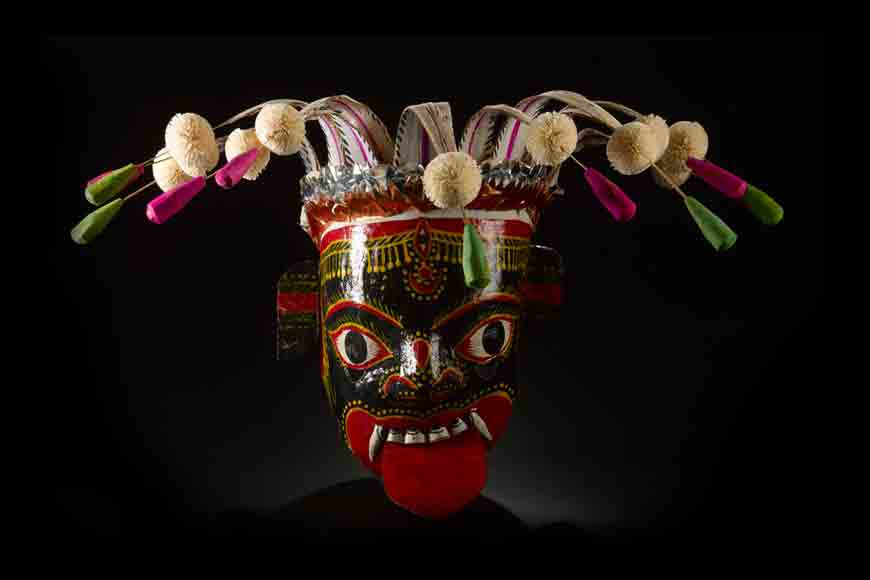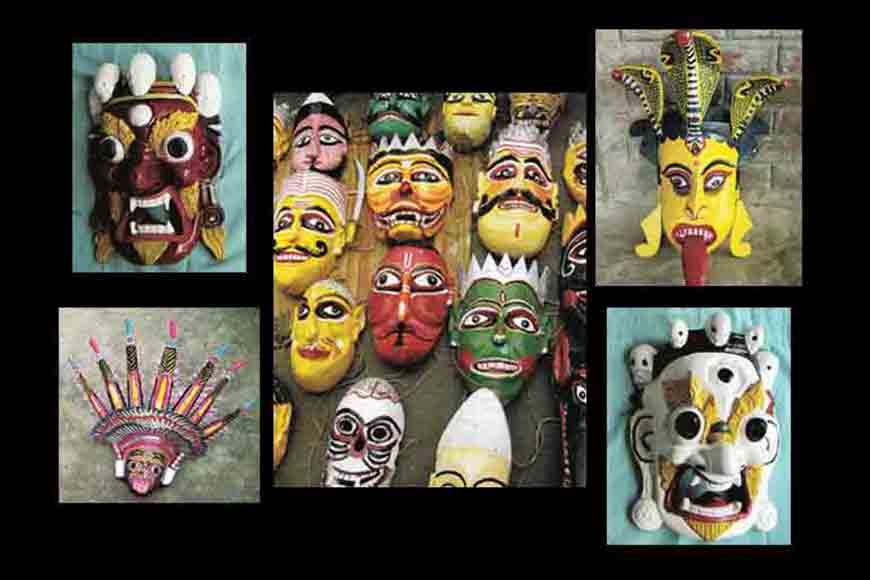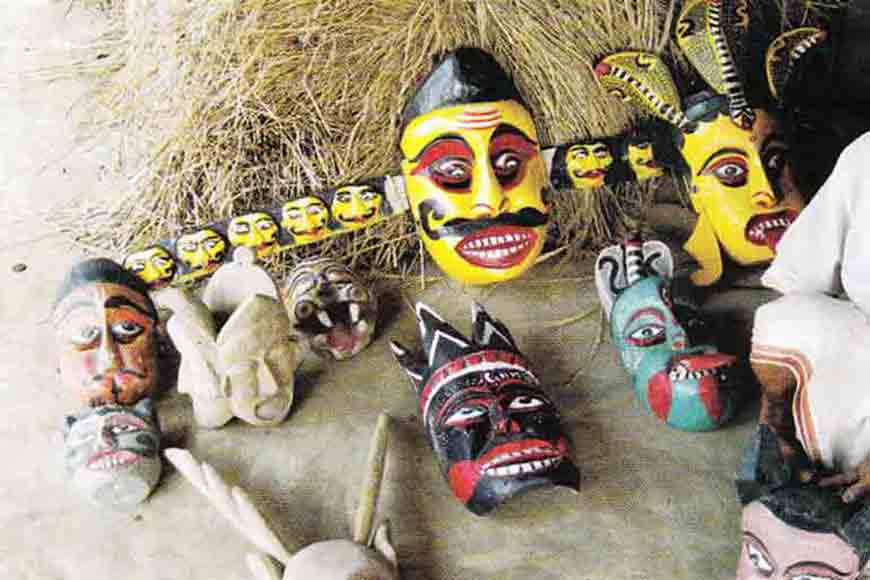North Dinajpur masks, the ongoing tradition - GetBengal story

Masks have been used since antiquity for both ceremonial and practical purposes. The word mask appeared in English in the 1530s, from Middle French masque that means ‘covering to hide or guard the face,’ derived in turn from Italian maschera, from Medieval Latin masca which means ‘mask, specter, nightmare.’

The use of masks in rituals or ceremonies is a very ancient human practice across the world, and although they tend to share many characteristics, highly distinctive forms have developed. The function of the masks may be magical or religious; they may appear in rites of passage or as a make-up for a form of theatre. Equally masks may disguise a penitent or preside over important ceremonies; they may help mediate with spirits, or offer a protective role to the society who utilise their powers. Masks can also be worn for protection, in hunting, in sports, in feasts, or in wars – or simply used as ornamentation.
Diverse masks are made in different districts of West Bengal. They are usually made of clay, wood, bamboo and paper. In North Dinajpur district, masksare made of wood and sola (an Indian swamp plant of the pea family, with stems that yield the pith used to make various functional items). Wooden masks are made from the trunk of Gamar and Chhatim trees. They are lightweight and do not split while carving. However, trunks of shimul, shishu, mango and jamun trees are also used.
The process of mask-making is pretty complex. It all begins with wood from freshly-felled trees. Each wooden block needs to be 50 cms long with a circumference of 90 cms. The block is then bifurcated to make two masks. The facial details are carved out on the exterior rough side of the wood. Ears, nose, teeth are sculpted deftly using chisels, gouges and knives of different size and shapes. After completion, three small holes are made for tying the mask: two on both sides next to the ears and one on top of the mask. Those used by performers have carved eyes and nose to enable them to see during their act.After carvingis completed, the surface is smoothened with sand paper and finally they are coloured with oil paints.

Sola masks are not used often. They are made and used for conducting religious rituals. These masks are vibrant and colourful. Sola stem is procured from marshlands, then the pith is extracted, cut into long pieces and pasted on paper and shaped into masks of various sizes. They are painted with colours available in the market. Masks of Mashan and Kali are used for Puja rituals during the months of Baishakh-Jaistha(April- June).











